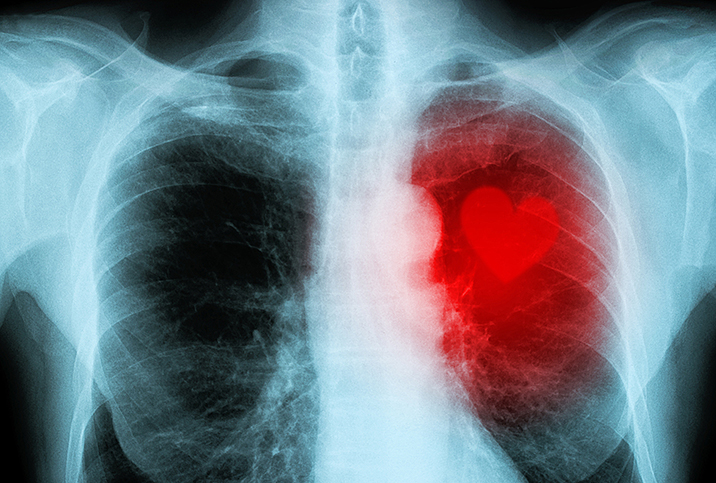Know the Signs and Symptoms of Heart Disease—and When to Seek Help

It can be an unsettling feeling when someone suspects they have heart disease or has recently been diagnosed with it. The heart is an epicenter within the body, and its functionality is necessary for the other systems to stay operational.
Thus, diseased hearts are of great concern for both cardiovascular health and overall health. These diseases can impede the ability to reproduce, properly digest and perform essential functions; even breathing is affected.
Heart disease refers to a broad range of conditions, and some cases are more easily managed than others. Patients may endure anything from moderate physical activity restrictions to major medical procedures to overcome the effects of heart disease, depending on their level of need.
Therefore, recognizing symptoms and pinpointing disease types are paramount for longevity and quality of life.
Common symptoms
The presentations of heart disease vary depending on the type, and they can affect any part of the heart.
Congenital heart defects, for example, are present at birth and become apparent shortly afterward. They are caused by structural abnormalities. If defects are undetected in the womb with a fetal echocardiogram, babies with critical conditions may be born exhibiting cyanosis, which is the presence of a bluish-purple tint to the skin caused by oxygen deficiency.
Chest pain—otherwise known as angina—is one of the most common symptoms of heart disease and is caused by insufficient oxygen or blood flow. This pain is described as feelings of pressure or burning and can also occur in the jaw, arms, neck, shoulders or back. Sometimes angina can be a sign of a heart attack.
Coronary artery disease (CAD) can be accompanied by gastrointestinal and respiratory disturbances.
People with CAD often notice angina as the first symptom, and this symptom frequently coincides with exercise, said Daniel L. Kulick, M.D., a board-certified cardiologist with Providence Mission Hospital in Mission Viejo, California. Alternatively, some people have a more severe onset.
"For over half of people who have CAD, their very first symptom is a heart attack without any warning chest pain," he said.
However, Kulick pointed out that the list of factors that can cause chest pain is incredibly extensive, and about 95 percent of the people he sees have alternative origins. In other words, chest pain alone isn't always a cause for concern.
Heart valve disease and disease of the heart muscle (cardiomyopathy) generally cause fatigue, weakness or lightheadedness, even when the patient isn't engaged in exercise or other physical activities, such as sexual relations. Swelling in the ankles, feet and abdominal region are warning signs of disease progression in either condition and could indicate heart failure.
Arrhythmias—abnormalities in the heart's rhythm—cause similar exhaustion, but their predominant symptoms are palpitations and shortness of breath. Inflammation of the tissue surrounding the heart (pericarditis) causes flu-like symptoms and sharp pains that feel like they are traveling, especially when lying down, coughing or swallowing.
Heart attacks, or myocardial infarctions, are episodes in which circulation is impeded and blood cannot flow between the heart and the rest of the body. Some attacks are acute and obvious due to extreme pain and impairments in respiration and consciousness, whereas silent myocardial infarctions (SMIs) are sometimes so subtle they remain undetected.
In fact, SMIs account for 45 percent of heart attacks.
Diagnosis and tests
Kulick identified many diagnostic procedures for heart disease. His recommended protocol is to first deduce the severity of the situation so treatment can be as minimally invasive as possible.
"We have whole batteries and algorithms of noninvasive testing that we can do to try and identify people who either don't have symptoms or have mild symptoms and need to be screened," he said.
A majority of patients don't require major medical interventions and can reduce symptoms with lifestyle modifications.
The first test Kulick mentioned was the standard treadmill test, during which people are made to exercise on a treadmill while cardiologists view electrocardiogram (EKG/ECG) patterns correlated with blockages. These can sometimes be combined with heart ultrasounds (echocardiograms) or other nuclear images of the heart to provide the level of perfusion within the heart muscle.
For people with no abnormal findings on the treadmill and whose cholesterol levels are borderline elevated, doctors obtain a calcium score to deduce how much of the mineral is deposited in their arteries and their correlated risk of cardiovascular issues.
A more invasive diagnostic tool Kulick discussed is an angiogram or a CT (computed tomography) angiogram. This technique allows cardiologists to view detailed images of the arteries without having to insert a catheter into the heart, as is the protocol for a standard heart catheterization, and reveals the degree of blockage.
From there, they decide if more advanced treatment is needed.
"These tests are being constantly sophisticated, upgraded and modified, and new ones are introduced," Kulick said. "It's really kind of an exciting time to be in medicine."
When to seek help and who to see
If you are concerned about heart disease, early intervention is the most proactive step you can take. Kulick suggested you first consult with your primary care physician to see if they think you may need to see a cardiologist for further investigation. Try to avoid getting ahead of yourself and obtaining referrals from "Dr. Google."
However, he didn't invalidate independent research, as it allows doctor-patient dialogue to start with intelligent inquiries.
It is of great importance to consider your risk factors for developing heart disease. If you have a family history of heart disease or chronic illnesses such as kidney disease or diabetes, it may be prudent to check on your heart health prior to symptom onset.
In the presence of new problems possibly indicative of heart disease, such as hypertension, high cholesterol or respiratory difficulties, make an appointment with your doctor—it can't hurt to check, but it can hurt to not check.
What happens if it goes undiagnosed?
Heart disease shouldn't be taken lightly. Ignoring the warning signs can lead to severe medical consequences and even death in the worst-case scenario. Even if no warning signs are present, the repercussions of poor heart health can affect your entire life, both personally and professionally.
Stress associated with a chronic illness can put a lot of strain on personal relationships, leading to issues such as separation, unintentional abstinence and reluctance to engage in intimacy for fear of a cardiac episode.
Unfortunately, there is a vast population suffering from undiagnosed heart disease. For example, a 2022 study published in the American Heart Association journal Circulation examined a small group of people who had experienced heart attacks. The study revealed 68 percent of them had coronary artery disease and, of this group, 3 in 5 had not been diagnosed. Additionally, 34 percent of the total group had left ventricular systolic dysfunction, a serious condition that potentially leads to heart failure or sudden death, and 84 percent of these people had been undiagnosed.
Women, in particular, experience undiagnosed or misdiagnosed heart disease because of their symptom presentation, which is often different from that of men, according to Kulick.
Myths and misconceptions
Though it may seem obvious to be actively concerned about developing heart disease, many people fall prey to fallacies about their personal risk and don't take sufficient precautions.
One significant myth is related to signs of a heart attack: They are not always the same, and there are significant gender differences. Though sometimes heart disease is considered a "men's disease," a comparable number of women are affected.
The development of heart disease, contrary to popular belief, can be due to biological and/or environmental factors. That is to say, even if you are youthful, active and predominantly healthy, you are not immune to heart disease. On the other hand, having a family history of the disease is not itself a death sentence by any means, as lifestyle choices can effectively prevent disease development.
Possibly the most harmful of all misconceptions is related to a false sense of security. Unfortunately, many symptoms go unnoticed, so just because you have thus far been unaffected by cardiovascular problems doesn't mean there is nothing wrong.


















